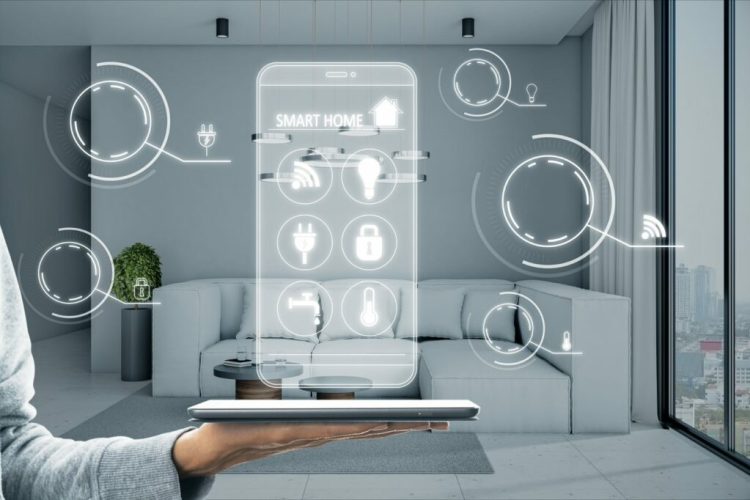As technology continues to evolve at a rapid pace, future-proofing your home by integrating the latest smart devices is an essential step toward enhancing convenience, comfort, and efficiency. In 2025 and beyond, smart home technology will not only make your life more seamless but will also help you save time, money, and energy. Designing your home for tomorrow requires thoughtful planning, adaptability, and incorporating cutting-edge gadgets that can grow with your needs.
This article will guide you on how to design your home for the future by integrating smart home technology that ensures it’s both functional and ready for upcoming innovations.
1. Start with a Smart Hub
A smart home hub is the heart of a connected home. It acts as a central control system that connects and manages all of your smart devices. In 2025, most smart homes will benefit from hubs that support multiple protocols and systems, such as Amazon Alexa, Google Assistant, Apple HomeKit, or Samsung SmartThings.
When designing your home, select a hub that’s compatible with a wide range of smart devices to future-proof your setup. By doing so, you ensure that your home is adaptable to new gadgets as they come out, preventing the need to replace everything as technology advances.
For example, a smart thermostat integrated with your hub can adjust the temperature based on your preferences, weather, and energy usage patterns. Other devices, such as lighting, security cameras, or voice assistants, can be controlled through your hub for a unified, intuitive experience.
2. Upgrade Your Home’s Connectivity
A smart home relies on a stable and fast internet connection. To future-proof your home, invest in high-speed internet and a mesh Wi-Fi network to ensure optimal coverage and performance. As smart devices become more advanced, their bandwidth requirements will increase, and a strong internet infrastructure will be crucial.
Mesh Wi-Fi systems like Eero or Google Nest Wi-Fi provide seamless coverage across your entire home, eliminating dead zones and ensuring that all of your devices work smoothly. These systems are scalable, meaning you can add more nodes if you decide to expand your smart home later.
Additionally, consider upgrading your router to support Wi-Fi 6 or Wi-Fi 6E, which will allow for better performance, lower latency, and greater bandwidth—ideal for a home with many connected devices.
3. Smart Lighting for Ambiance and Efficiency
Lighting is one of the easiest and most impactful smart upgrades you can make. Smart bulbs, like those from Philips Hue or LIFX, allow you to control the brightness, color, and even the warmth of your lights using voice commands or apps.
Incorporate smart lighting into key areas of your home such as the living room, kitchen, and bedroom. For a future-proof setup, ensure that your lighting system is compatible with your chosen hub, allowing you to automate lights to turn on or off when you enter a room or adjust to the time of day. You can also set lighting schedules or use motion sensors for energy savings.
For added convenience, look for smart dimmers and smart switches that allow you to control all lights in a room or home without needing a mobile device.
4. Smart Security Systems for Peace of Mind
Security is always a priority when designing your home, and smart security systems offer innovative solutions to protect your space. In 2025, expect advanced AI-powered security cameras, motion sensors, and smart locks that not only enhance security but also provide real-time alerts and automation.
- Smart Cameras: Devices like Arlo, Ring, or Nest Cam offer live-streaming capabilities, motion detection, and two-way audio, allowing you to monitor your home from anywhere. These cameras can integrate with your smart hub to automate actions such as turning on lights when motion is detected or locking doors after a certain time.
- Smart Locks: Keyless entry is an increasingly popular feature. Smart locks like August or Schlage provide remote control over your doors, offering peace of mind when you’re away. You can grant temporary access to guests, track who enters and exits, and even lock doors remotely from your smartphone.
- Sensors: Integrate motion sensors, window and door sensors, and smart alarms to further secure your home. These devices will alert you immediately if there’s unusual activity, even if you’re on vacation.

5. Smart Climate Control for Comfort and Efficiency
Temperature control is one of the most important aspects of home comfort. A smart thermostat, such as the Nest Learning Thermostat or Ecobee SmartThermostat, helps you maintain the perfect indoor climate while optimizing energy use.
These devices learn your preferences and adjust the heating or cooling based on your routines. For example, they can automatically lower the temperature when you’re away and return it to your preferred setting before you come home. This reduces energy consumption, helping you save on utility bills while ensuring comfort.
Additionally, smart air purifiers and humidifiers can help maintain optimal air quality, which is crucial for health and well-being. Devices like the Dyson Pure Cool and Levoit Smart Air Purifiers are capable of adjusting air quality based on real-time data, ensuring the air in your home stays clean and fresh.
6. Voice-Activated Assistants for Hands-Free Control
Voice assistants have become a staple in smart homes, offering hands-free control of many devices. The latest models of Amazon Echo, Google Nest Hub, and Apple HomePod have improved their AI capabilities and can perform a variety of tasks with more context-awareness and accuracy.
These voice assistants can be used for everything from controlling lights and thermostats to setting reminders and answering questions. As they continue to evolve, they will play an even larger role in your home, enabling a more intuitive and efficient way to manage your daily tasks. Integrating voice assistants into your design from the start ensures you have easy control over a growing number of smart devices in your home.
7. Smart Appliances for Convenience and Sustainability
Smart appliances are not just a trend; they are a practical and eco-friendly way to future-proof your home. From smart refrigerators that track groceries and suggest recipes to robot vacuums that clean autonomously, these gadgets help save time and energy.
Smart washing machines and dishwashers, such as those from LG and Samsung, use sensors to optimize water and energy usage, making them more sustainable and efficient. These appliances can also be controlled remotely, allowing you to start a load of laundry or a dishwasher cycle while you’re away.
As smart appliances evolve, expect features like AI-driven maintenance alerts, predictive washing/drying cycles, and even more integration with other smart home systems.
8. Integrated Entertainment Systems
For a truly connected home, consider integrating your entertainment systems into your smart home setup. Smart TVs, like Samsung QLED or LG OLED, already offer voice control and integration with services like Amazon Alexa or Google Assistant. In the future, these systems will continue to evolve, offering higher-resolution displays, immersive audio experiences, and enhanced interactivity.
You can also incorporate smart speakers for multi-room audio, using platforms like Sonos or Bose to create a high-quality sound system throughout your home. Integration with voice assistants and streaming services will allow you to control your entertainment options with just your voice, enhancing convenience and enjoyment.
9. Sustainable Smart Solutions
As sustainability becomes more of a focus, future-proofing your home includes incorporating eco-friendly technology. In addition to energy-efficient smart thermostats and appliances, consider integrating smart solar panels, rainwater harvesting systems, or energy monitoring devices into your home.
Devices like Sense Energy Monitors can track your home’s energy consumption and help you make adjustments to reduce waste. Smart solar systems can be integrated with home energy storage solutions, allowing you to store excess energy generated by solar panels for later use, making your home more self-sufficient.
10. Ensure Ongoing Upgradability
When designing your home for tomorrow, it’s important to plan for the future. As technology rapidly advances, you’ll want to ensure that your home’s infrastructure is easily upgradable. Use modular devices that can be replaced or expanded with minimal effort. Opt for smart systems that can easily integrate with emerging technologies and updates, ensuring you’re not left behind as new innovations roll out.
Consider installing wiring and outlets that are compatible with future smart devices. For example, smart lighting and smart plugs can be upgraded as new features are developed, while ensuring that your home remains flexible and adaptable to the latest gadgets.
Conclusion
Designing your home for tomorrow requires thoughtful integration of the latest smart home technology that’s both functional and future-proof. By focusing on connectivity, automation, energy efficiency, and convenience, you can create a living space that adapts to your needs and seamlessly incorporates emerging technologies. As we move into 2025 and beyond, smart homes will continue to evolve, making life easier, more efficient, and more enjoyable. Start future-proofing your home today by investing in the right smart devices, ensuring you’re prepared for tomorrow’s innovations.


















































Discussion about this post